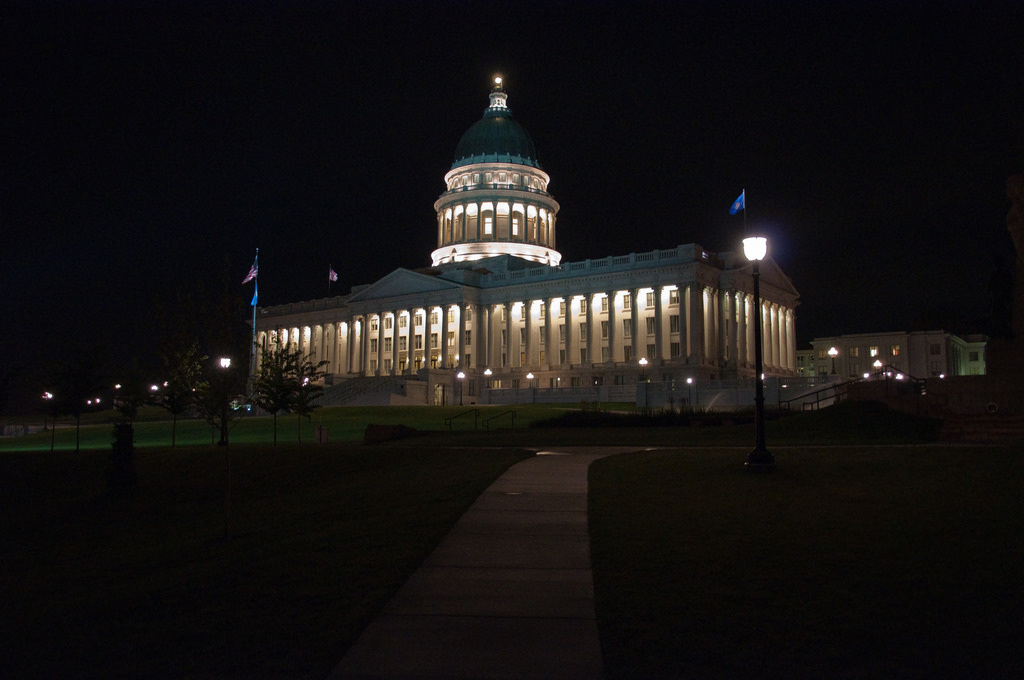| Someone needs to offer a course for politicians and other public officials on filling a time capsule. When I heard Gov. Gary Herbert was going to open a box that was buried inside a pillar at the State Capitol back in April of 1914, I said aloud, to no one in particular, that I could predict what was inside — some coins, a book or two and newspapers, lots of newspapers. Yawn. It’s not the fault of the folks in 1914. Oh, they could |
| | have spiced things up by having everyone write down how they really felt about each other, knowing it wouldn’t be read for 100 years (think how fun that unveiling ceremony would have been!), but newspapers, coins and books were pretty standard time capsule fare in those days. They had no way to predict how the world would change in 102 years, how encompassing the Information Age would be, or that there even would be an Information Age. The irony is that the things they stashed away might have been more exciting to people 30 years ago than today. As it was, I needed about two minutes on a computer to pull up digital copies of most of the newspapers in Utah from around that time. They looked familiar as Herbert pulled them out of the box. They also looked eerily familiar when I first looked at them on my computer screen. In a copy of the Salt Lake Tribune from April 12, 1914, just eight days after the time capsule was sealed, I found a front-page story about a meeting in Denver of Western governors. The topic? How to get Washington to relinquish control over federal lands. The governors passed a resolution calling on their states to pass laws that would “make for true conservation of our resources, prevent monopoly and render the greatest good to the greatest number...” As soon as this happened, the governors said, “… the federal government should withdraw its supervision and turn the work over to the states.” I found no word on how Cliven Bundy’s great grandfather felt about that, or whether off-road horseless buggy enthusiasts agreed. Maybe the problem isn’t so much that Utahns in 1914 were unimaginative when putting together a time capsule; it is that the West itself is a boring place. A century later the headlines haven’t changed much. Or maybe it’s that the thing we need most from those people in 1914 — their wisdom and insights about life — were impossible to put in a box. What would they think of our habits, our values or our constant need for entertainment? If only we had found a handwritten paper that said, “If you ever face a presidential election involving a profane businessman and a former First Lady who may have broken the law, you should ____.” What would we give to see what they put in that blank? The governor hinted the state may soon put together another time capsule. This is going to take some thought. Newspapers would be silly to put inside, except maybe as relics from a former time. We don’t use coins much any more, but I doubt the folks in 2116 would be wowed by a collection of credit cards. Nothing we seem to truly value today has a battery life that would stretch that far into the future, and they probably won’t be much interested in the texts and selfies we might leave on a smartphone, anyway. Perhaps the biggest challenge may be that many people today don’t value much that would last 100 years. In truth, I’m being too hard on the folks of 1914. They filled the time capsule with things that conveyed a snapshot of their daily lives, plus mementoes that speak with pride of the State Capitol building they were constructing. They had no idea of the wars, hardships and accomplishments that would span the years between them and us, but we can sense their spirit in the Capitol they built and the state government that continues to prosper. Time capsules are for fun. The things that truly matter, however, must be handed down carefully, one generation at a time. |


 RSS Feed
RSS Feed

